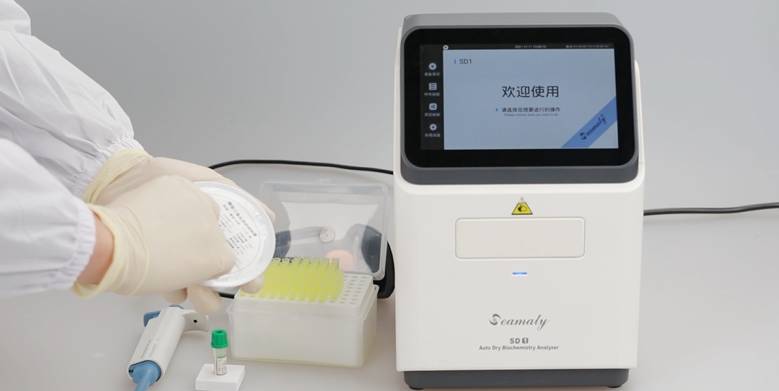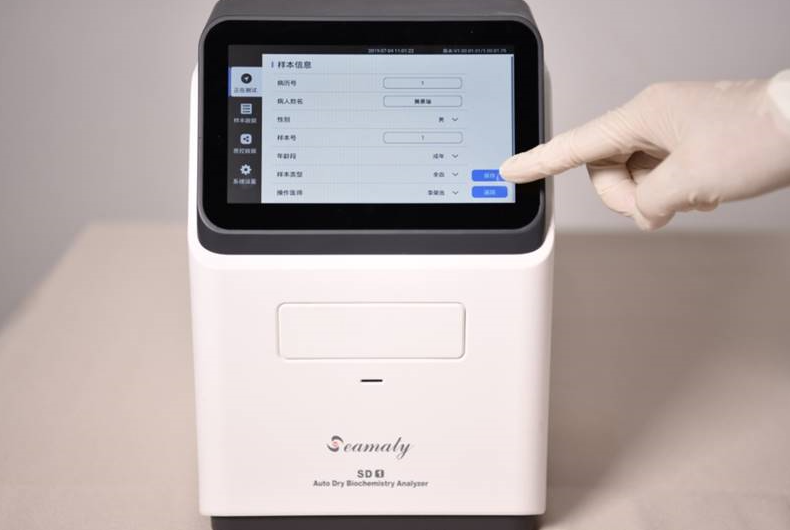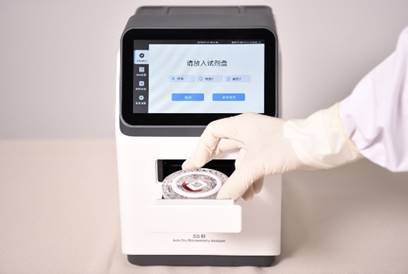The majority of clinical biochemistry tests are now automated. Most of them are performed by fully automated biochemistry analyzers. The fully automated biochemistry analyzer is computer-controlled. It combines the steps of sampling, reagent addition, mixing, holding reaction, testing, result calculation, reliability judgment, printing and cleaning in biochemical analysis together automatically.

Automatic biochemical analysis technology improves the quality and speed of clinical tests, reduces the labor intensity of test personnel, saves samples and reagents, increases test items, improves test precision, reduces errors, and facilitates the realization of standardized clinical tests. At the same time, biochemical analyzers to improve the overall quality of personnel requirements. Reasonable parameter settings are the guarantee of the reliability of test results. Correct calibration is the key step to ensure the accuracy of test results. The following is about the calibration of biochemical analyzers.
1. The importance and necessity of calibration
First of all, it must be clear that no matter how advanced the biochemical analyzer is, it is still an instrument. It tests the specimen results are different with the setting of the standard limit and change. For a clinical test, if any of the measurement principles, reagents, instruments and calibrators used are different, different results may be obtained. The fully automated biochemistry analyzer measurement system includes four elements: measurement principle, reagents, instruments, and calibrators.
If we want to get accurate and reliable measurement results that are comparable with other laboratories, we should establish a standard measurement system by ourselves. Use matching reagents and standards on a fully automated biochemical analyzer. Each biochemical instrument manufacturer has its own standard determination system. Calibration of the instrument is an important part of indoor quality control.
2. Calibration materials and quality control materials
1)Calibrator
The calibrator contains a known amount of the substance to be measured and is used to calibrate the value of the measurement method. It is associated with the method and the reagents and instruments. The role of calibration materials is to reduce or eliminate the systematic errors caused by instruments, reagents, etc. Therefore, it is best for human serum matrix to reduce the error caused by matrix effects.
2)Controlmaterials
Controlmaterials are only used for simultaneous determination with the specimen to be measured. In order to control the measurement error of the specimen, so the storage time is required to be very stable. The former is the calibration of its value while the latter is used to control the error.
3) Blank adjustment
In the blank adjustment, the system only reanalyzes the reagent blanks.
3. Preparation before calibration
1) After normal start-up, check whether the flushing water device is normal. Check whether the reagents for each analysis are sufficient. Check whether the cleaning agents are sufficient. Make sure the sample needle, reagent needle and stirring bar are clean.
2)Confirm the items to be calibrated. Confirm the quality control lot number and items to be done. Whether the calibration and quality control products are sufficient or not.
3)Check the basic performance of the instrument (how long the bulb has been used, whether the drift is in accordance with the requirements, the cleanliness and wear of the colorimetric cup, etc.), and soak the tube with detergent to make the instrument calibration in the best condition.
4. Calibration of biochemistry analyzer
A fully automated biochemistry analyzer must be calibrated (i.e., calibrated) prior to sample analysis to obtain a calibration factor (K) for the item. The calibration parameters must be set in the reaction program before calibration. For example, the concentration of the calibration solution.
The calibration procedure is performed and the absorbance value of the calibrator is detected. Then calculate the calibration coefficient based on the calibration concentration (K=calibrator concentration/calibrator absorbance).
1)Calibration method
There are three calibration methods: single-point calibration, two-point calibration and multi-point calibration. The calibration curve for most of the assays is straight and passes through the origin. A single concentration of calibration solution can be used. If the calibration curve is straight but does not pass through the origin, two-point calibration with two concentrations of calibration solution is required. When the calibration curve is not straight but true, multi-point calibration should be done. And according to its line shape, choose different curve equations for fitting, such as hyperbola, parabola, power function, exponential function, logarithmic function and other equations.
Most biochemical analyzers have been set up with several curve equations to automatically process the results of multi-point calibration. The curve fitting equation and the absorbance of the sample can be calculated by this equation.
2)Requirements for calibration products
-
Select the appropriate calibrator, including the number, type and concentration of the calibrator.
-
If possible, the calibrator should be traceable to the reference method and reference material.
-
Determine the frequency of calibration: according to the stability of the test method and reagents to determine the frequency of different calibrations. Such as daily calibration, weekly calibration, monthly calibration, etc. Determine the frequency of calibration according to the test results of the instrument.
Different manufacturers produce fixed-value quality control serum target values vary greatly between some. Therefore, it is not possible to replace the calibrator with a fixed value serum for calibration.
3) Develop a calibration plan
Calibration is not something that can be done once and for all, but must be done regularly.
A. (1) Select appropriate (matching) calibrators, including the number, type and concentration of calibrators.
B. (2) If possible the calibrator should be traceable to a reference method or reference substance.
C. (3) Determine the frequency of calibration. Calibration shall be performed at least every six months.
D. (4) Calibration must be performed if any of the following conditions occur
a) The type of reagent is changed, or the lot number is changed. If the laboratory can state that changing the reagent lot number does not affect the range of results, calibration may not be performed.
b) The instrument or test system undergoes a major preventive maintenance or a replacement of critical components, which may affect test performance.
c) quality control reflects an abnormal trend or deviation, or exceed the acceptance limits specified by the laboratory, after taking general corrective measures, when the problem cannot be identified and corrected.
Each laboratory must have a calibration plan for each instrument. Each calibration must be documented and analyzed in detail. Each calibration record must be kept for inspection.
In short, the calibration of biochemical analyzers is directly related to the reliability of biochemical test results. In clinical work, only strict implementation of each link of calibration, good calibration of the project, good quality control of the routine, in order to ensure the quality of the test.



